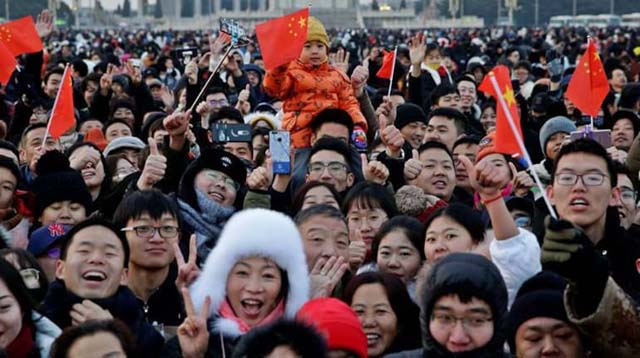
BEIJING, Jan 17, 2024 (BSS/AFP) - China's population decline accelerated in
2023, official data showed Wednesday, extending a downward streak after more
than six decades of growth as the country battles a looming demographic
crisis.
Once the world's most populous country, China was overtaken by India last
year, with Beijing now scrambling to boost falling birth rates through
subsidies and pro-fertility propaganda.
"By the end of 2023, the national population was 1,409.67 million... a
decrease of 2.08 million over that at the end of 2022," Beijing's National
Bureau of Statistics (NBS) said Wednesday.
Last year's decline was more than double the fall reported for 2022, when the
country lost 850,000 people as its population shrank for the first time since
1960.
"In 2023, the number of births was 9.02 million with a birth rate of 6.39 per
thousand," the NBS said Wednesday, down from 9.56 million births in 2022.
China ended its strict "one-child policy", imposed in the 1980s amid
overpopulation fears, in 2016 and started letting couples have three children
in 2021.
But that has failed to reverse the demographic decline for a country that has
long relied on its vast workforce as a driver of economic growth.
Many blame falling birth rates on the soaring cost of living, as well as the
growing number of women going into the workforce and seeking higher
education.
"The trend of China's population decline is basically impossible to reverse,"
He Yafu, an independent Chinese demographer, told AFP.
"Even if fertility is encouraged, it is impossible for China's fertility rate
to rise to replacement level, because now the younger generation has
fundamentally changed its conception of fertility and is generally unwilling
to have more children," He said.
To postpone an economic crisis as the pool of working-age adults shrinks, He
said the government should roll out more incentives including childrearing
stipends, "developing universal child-care services, and increasing the rate
of children under the age of three entering nursery schools".